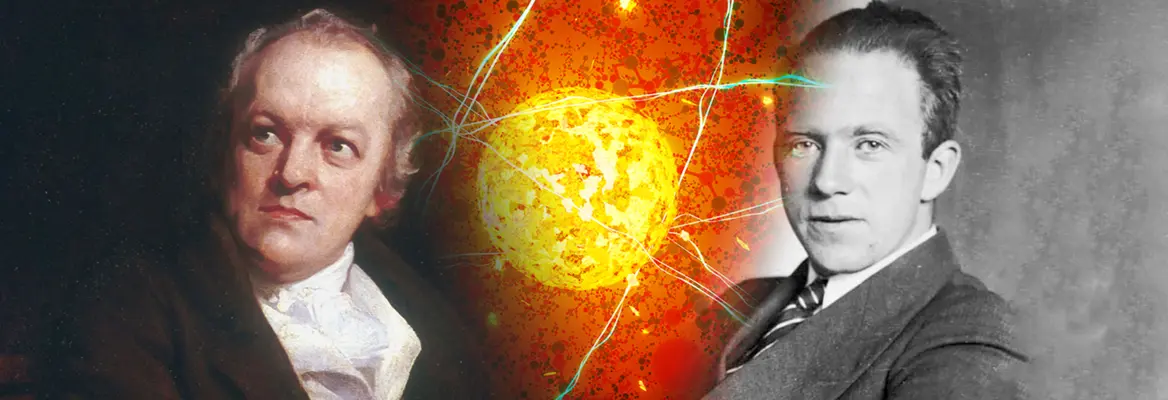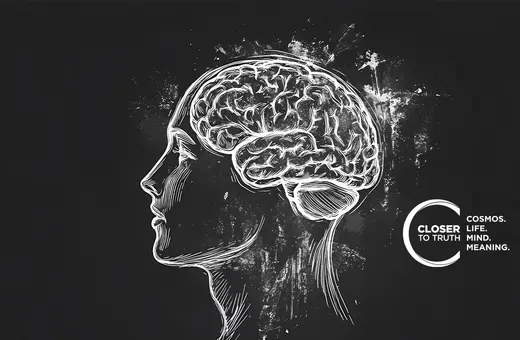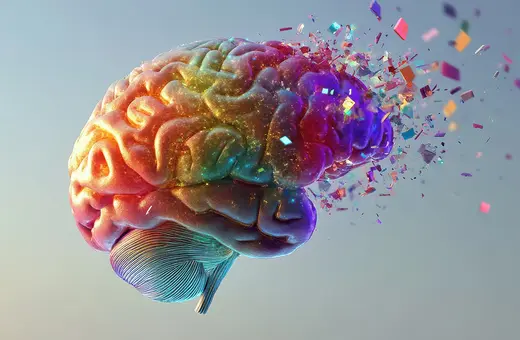William Blake and Werner Heisenberg, radical poet and pioneering quantum physicist, shared the same fear: that science, while enabling us to intervene in the world ever more powerfully, was at the same time cutting us off from reality itself. Science works by inferring general categories and laws from individual observations. This potent method, left unchecked, locks us into a generalizing model, which Blake calls a “single vision” and in which, Heisenberg says, “reality is lost.” For both poet and physicist, only through poetry and imagination can we reconnect with reality’s vivid particulars, argues psychotherapist and writer Mark Vernon.
The poet William Blake is often thought to be anti-science. Consider one of his best-known phrases: “Single vision and Newton’s sleep.” That sounds like a criticism. “Reductive” would be the modern word: science produces a limited perception of things, an accusation firmly pinned to the standout genius of early-modern science, Isaac Newton.
But consider again, because Blake can also fulsomely affirm the sciences. In one place, he writes: “What is the Life of Man but Art & Science?” In another: “Arts & Sciences are the Destruction of Tyrannies or Bad Governments.”
So what is Blake’s complaint and why might it matter now?
An initially simplified view of his worry provides a starting point. Roughly speaking, Blake was against any account of things that gave exclusive place to the rational. Newton takes a hit because of his application of rigid principles of cause and effect as a dominant mode of explanation.
___
Generalizations are deductions about the nature of things, derived from examples and instances. That is an inductive step, and the process steps back from reality into a model of reality. This attempt to understand things therefore takes us from them.
___
So remarkably powerful was this approach that Newton’s work inspired parallel efforts to understand other phenomena. Another key figure of opprobrium for Blake was, therefore, John Locke, a friend of Newton who thought of himself as an “under-labourer” to the great scientist. Locke applied observation and reason to questions of human understanding and behaviour, producing his best-known theory that the mind is a blank slate, or tabula rasa. Born empty, the mind absorbs sensory experiences that are then shaped by inner processes of reasoning and remembering.
Blake resisted this rationalising turn for a range of reasons. But one stands out for its relevance to us today. The heart of Blake’s complaint is that the world around us is not best understood through generalizations. His logic is clear: generalizations are deductions about the nature of things, derived from examples and instances. That is an inductive step, and the process steps back from reality into a model of reality. This attempt to understand things therefore takes us from them.
___
Through this process of idealization and precise definition the immediate connection with reality is lost.
___
A similar critique has been made by others. From Blake’s own time, the best-known of these was the Scottish philosopher, David Hume. But consider someone else: Werner Heisenberg, one of the founding figures of quantum physics. Science requires a version of reality amenable to mathematical analysis, Heisenberg noted. “But through this process of idealization and precise definition the immediate connection with reality is lost,” he continued. Further, Heisenberg and Blake had an additional concern.






















Join the conversation